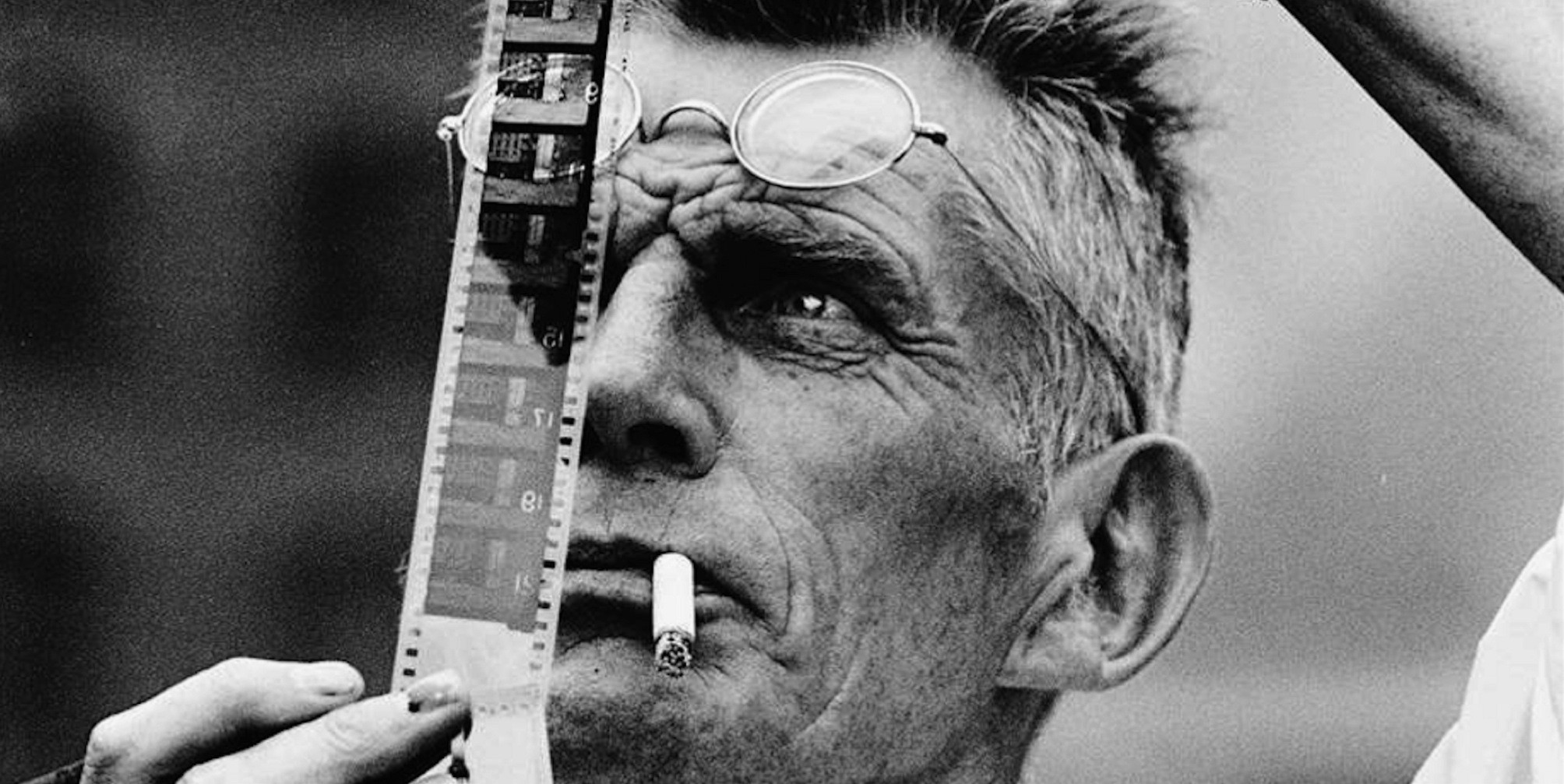
Buster
It should have worked. It should have been amazing.
What could be better than a team up between absurdist playwright Samuel Beckett, and cinema’s great clown Buster Keaton? Add to that, a story that’s nothing more than a chase scene boiled down to essence? What could have possibly gone wrong?
The rather preciously named Film— screening at the Brooks Museum this week — should have been a spectacular cinematic event, not some footnote and fascinating curiosity. But Beckett had no idea how to make a movie. His friend and longtime collaborator Alan Schneider didn’t either. Worser
Sam
still, neither of these grand men of the theater knew how to talk to the poker-faced (and minded) Keaton, a certifiable master of the form.
Beckett and Keaton couldn’t have been more different. The former was a heady, experimental philosopher, the latter more interested in technical details and visceral pleasures. Keaton had previously turned down the role of Lucky in the American premiere of Waiting for Godot, because, like so many American theatergoers, he just didn’t get it.
Ironically, Beckett described Keaton as impenetrable.
Keaton didn’t understand Film either, and said so publicly. He took the gig because he needed the work.
Visual essayist Ross Lipman tells the story of Beckett’s struggle to understand the language of film and of his difficult relationship with collaborators like Keaton and award winning cinematographer Boris Kaufman in the documentary Notfilm, also screening at the Brooks this week. Lipman’s digital feature (not film) is narration-heavy, and contemplates itself into some un-cinematic corners. It also contains fantastic interview footage with actress Billie Whitelaw, who’s widely regarded as the definitive interpreter of Beckett’s work.
As a teenager, Leonard Maltin visited the movie set hoping to meet Keaton, whom he idolized. With starry-eyed fanboy zeal the popular film critic recounts his story of an uneventful meeting that, nevertheless, made a lasting impression. He knows Beckett was probably on location too, but Malton only had eyes for Keaton.
‘Film’ and ‘NotFilm’: Buster Keaton & Samuel Beckett visit Brooks Museum
Beckett regarded Film as a qualified failure, and strong evidence that his peculiar brand of performance didn’t translate well to the big screen. Still, the curious artifact functions as a kind of movie trailer, teasing images and themes the playwright explores more thoroughly in plays like Endgame and Rockabye. It does so with lots of stark visual appeal thanks to Kaufman’s cinematography.
NotFilm, by contrast, is a qualified success that could take a lesson from Beckett’s show-don’t-tell ethos.
On a side note, Kaufman was the younger sibling of Russian film pioneers Dziga Vertov and Mikhail Kaufman. He worked as cinematographer and director of photography on a number of Hollywood features including Tennessee Williams’ gorgeously-shot The Fugitive Kind. That was the story’s third title. It had originally been staged as Battle of Angels, then rewritten and staged as Orpheus Descending.
New Moon Theatre Company’s solid production of Orpheus Descending is currently on stage at Midtown’s Evergreen Theatre.